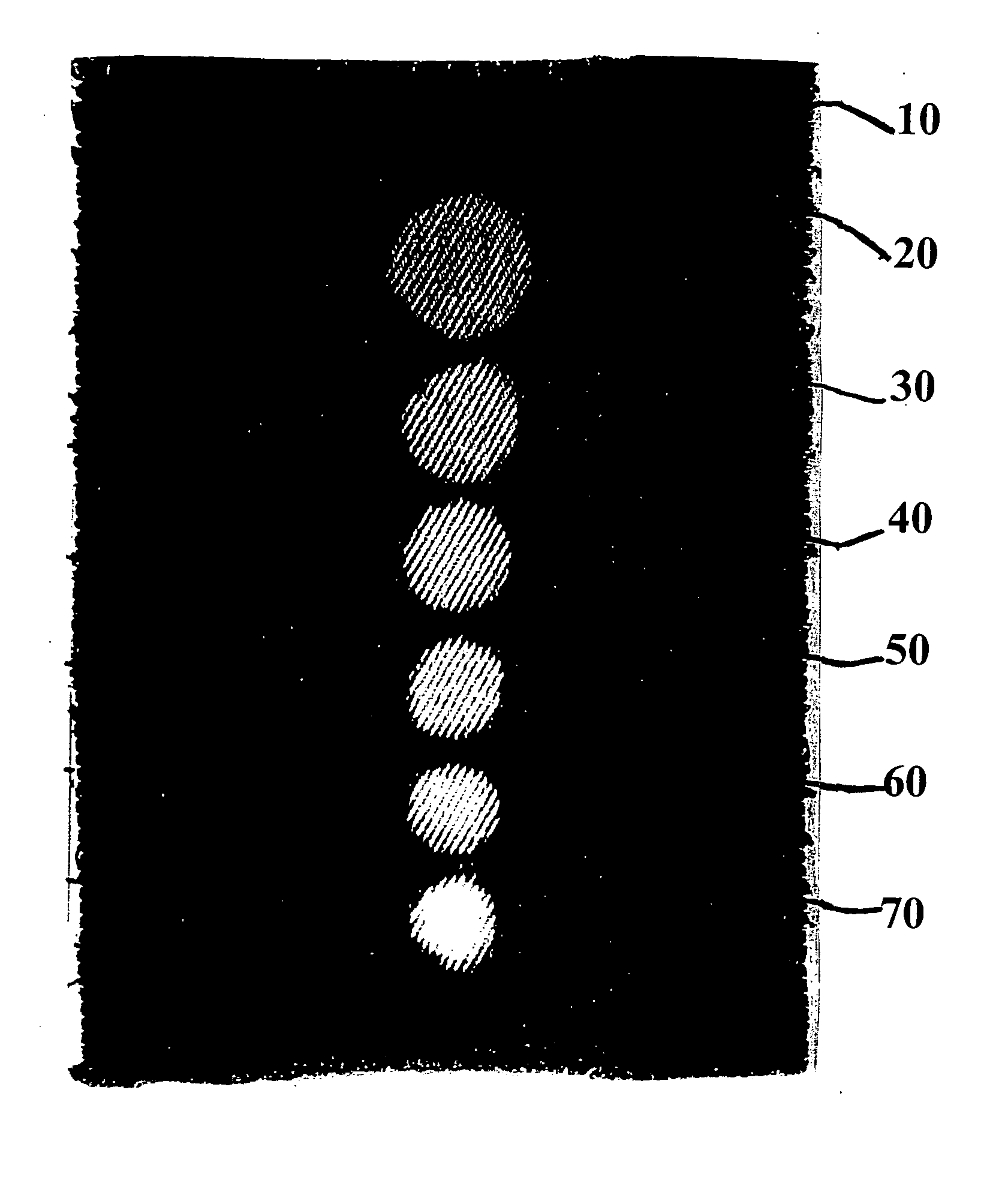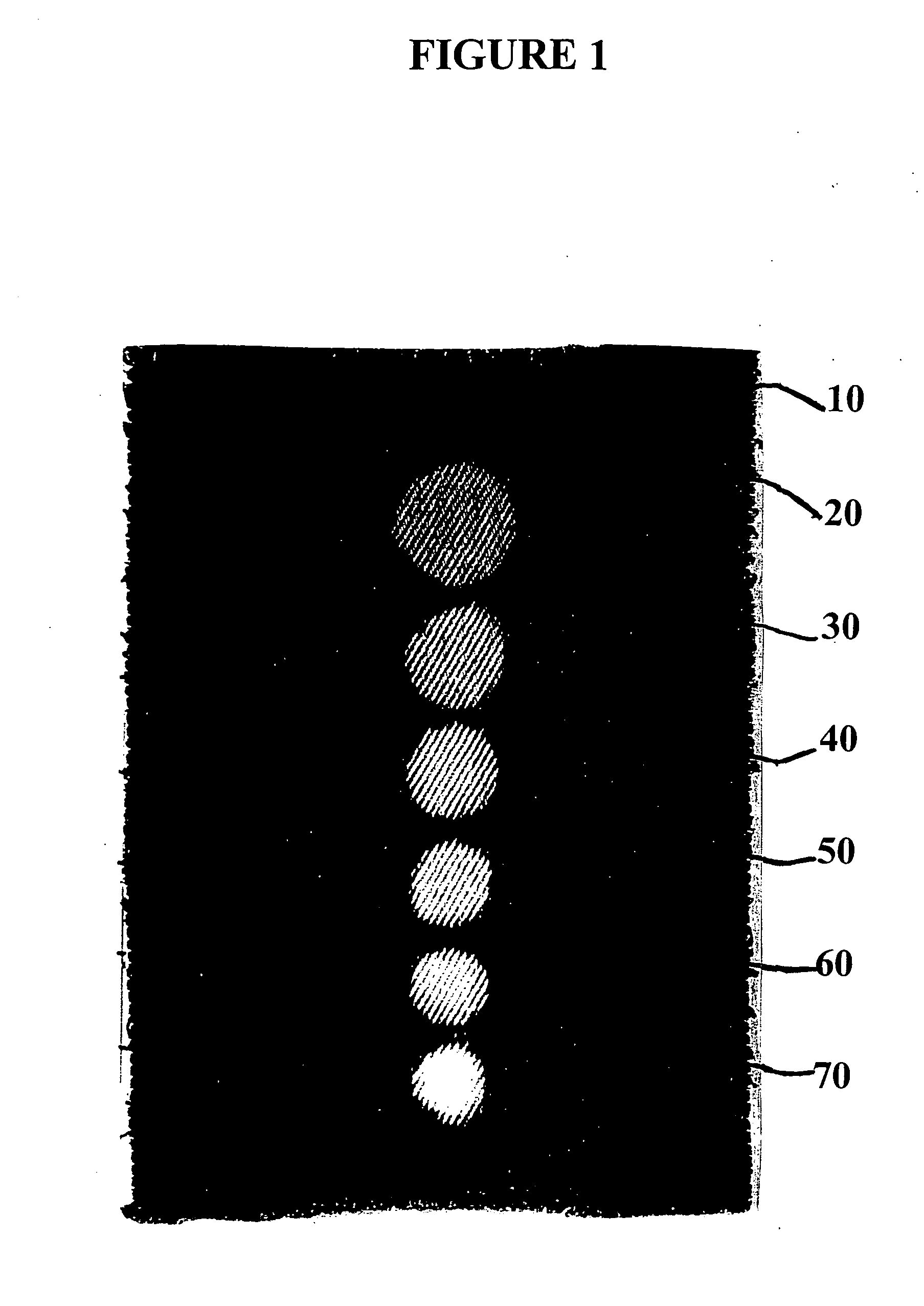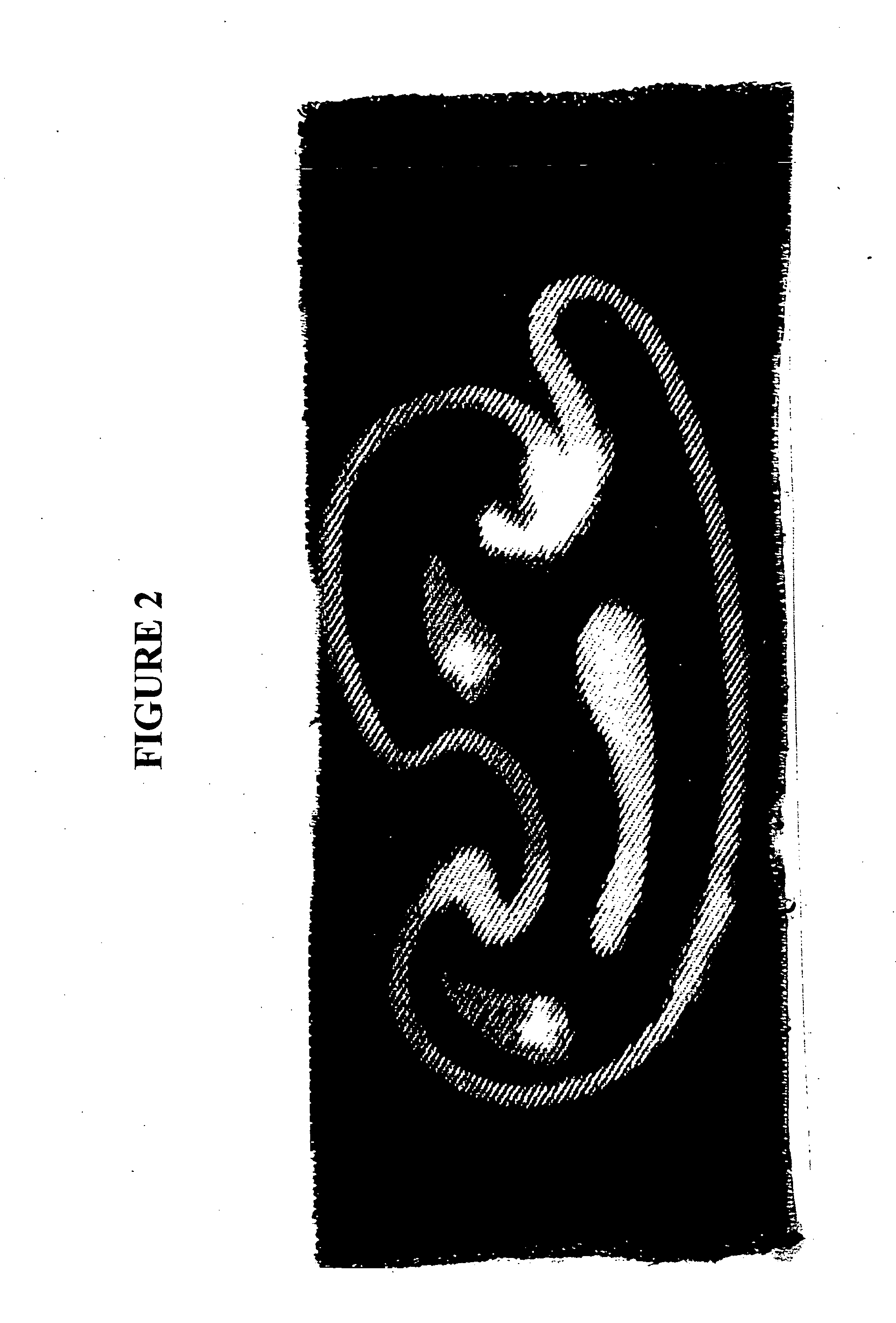Formation of patterns of fades on fabrics
a technology of fabric and pattern, applied in the field of fabric, can solve the problems of unfavorable patching, unfavorable fabric treatment, and inability to treat specific areas of fabric individually, and achieve the effect of simplifying the production process and minimizing the handling of fabri
- Summary
- Abstract
- Description
- Claims
- Application Information
AI Technical Summary
Benefits of technology
Problems solved by technology
Method used
Image
Examples
example 1
Example 1
Creation of Jeans Fades Art to Denim Jeans Fabric
[0056] A flat dye brush (approximately 0.125×0.375×0.375 in) was used to apply the bleach in broad strokes and to make fine lines. The brush was dipped in a hypochlorite salt-containing composition, shaken to remove excess liquid and then applied to the fabric. Excessive liquid may diffuse into the adjoining areas of the pattern and may cause the loss of detail. On the other hand, insufficient liquid may require additional passes of the brush over the same area. Applications to a test fabric can be tried first to develop speed and skill. A template may be used as a guide for the application. After each section of artwork is completed, the template may be removed temporarily, if desired, to observe how the art is developing—being careful, of course, to replace the pattern exactly in the original location before continuing and be mindful of the treatment time.
[0057] Examples of the representative artwork are shown in FIGS. 2-...
PUM
| Property | Measurement | Unit |
|---|---|---|
| weight percent | aaaaa | aaaaa |
| weight percent | aaaaa | aaaaa |
| weight percent | aaaaa | aaaaa |
Abstract
Description
Claims
Application Information
 Login to View More
Login to View More - R&D
- Intellectual Property
- Life Sciences
- Materials
- Tech Scout
- Unparalleled Data Quality
- Higher Quality Content
- 60% Fewer Hallucinations
Browse by: Latest US Patents, China's latest patents, Technical Efficacy Thesaurus, Application Domain, Technology Topic, Popular Technical Reports.
© 2025 PatSnap. All rights reserved.Legal|Privacy policy|Modern Slavery Act Transparency Statement|Sitemap|About US| Contact US: help@patsnap.com



